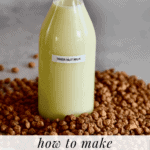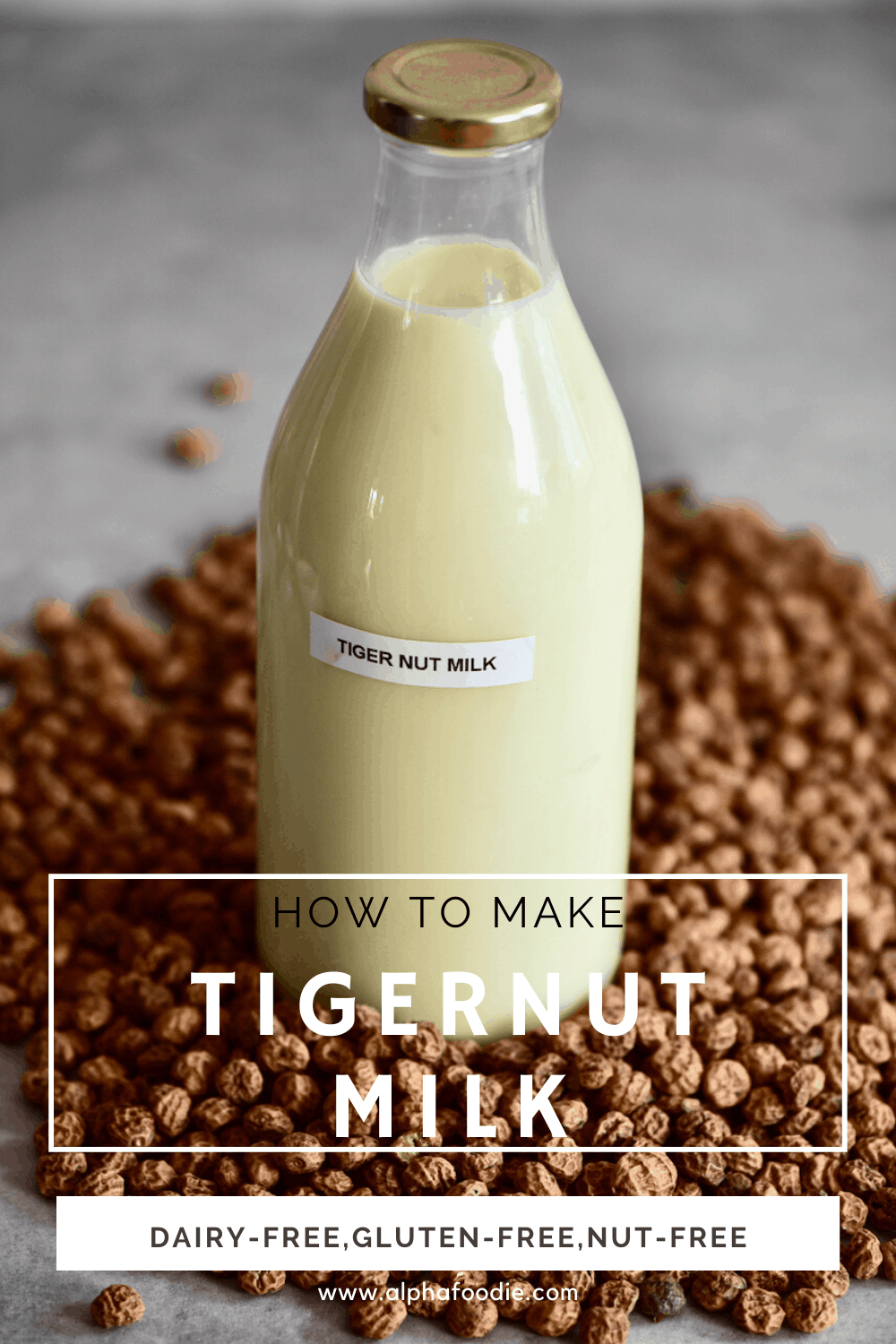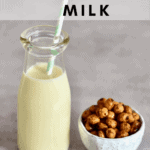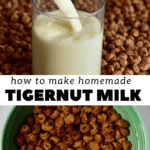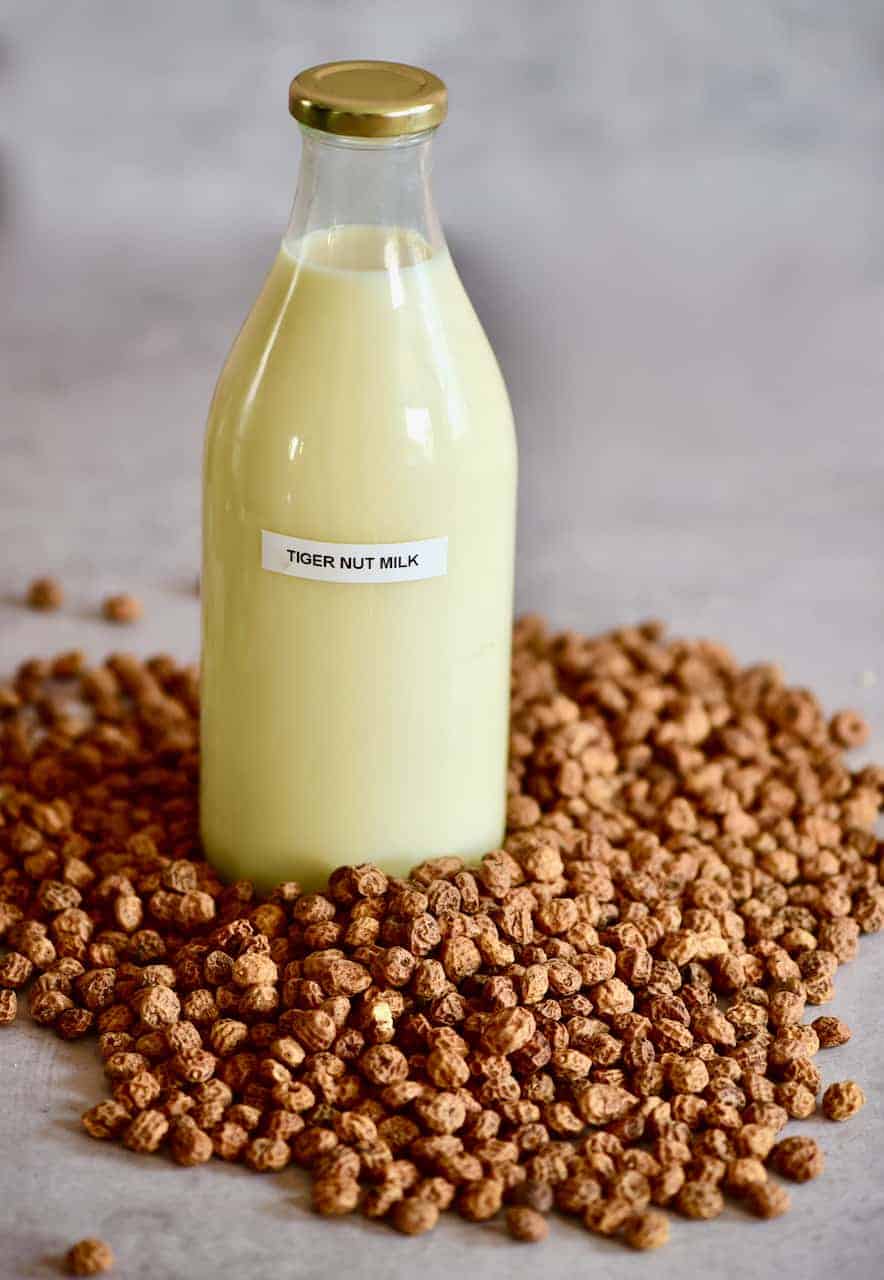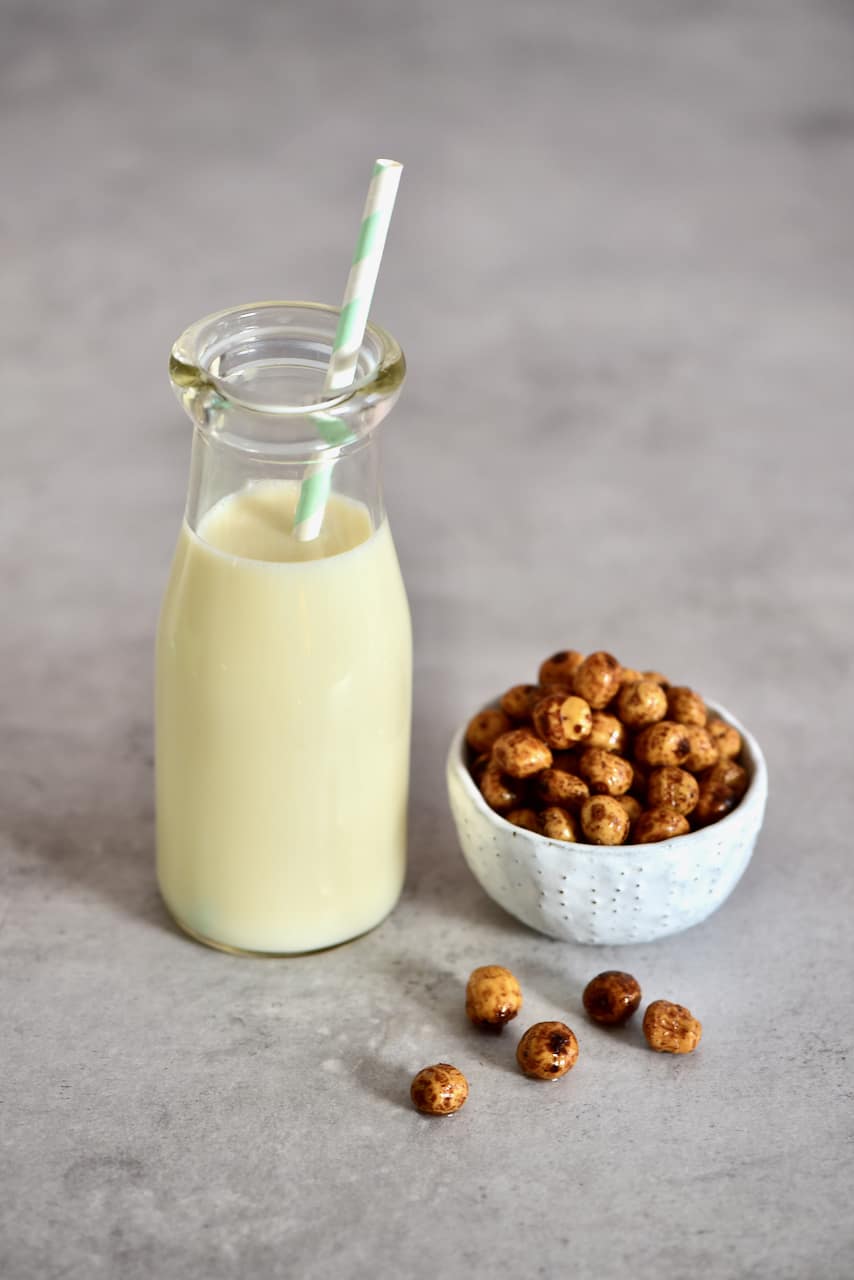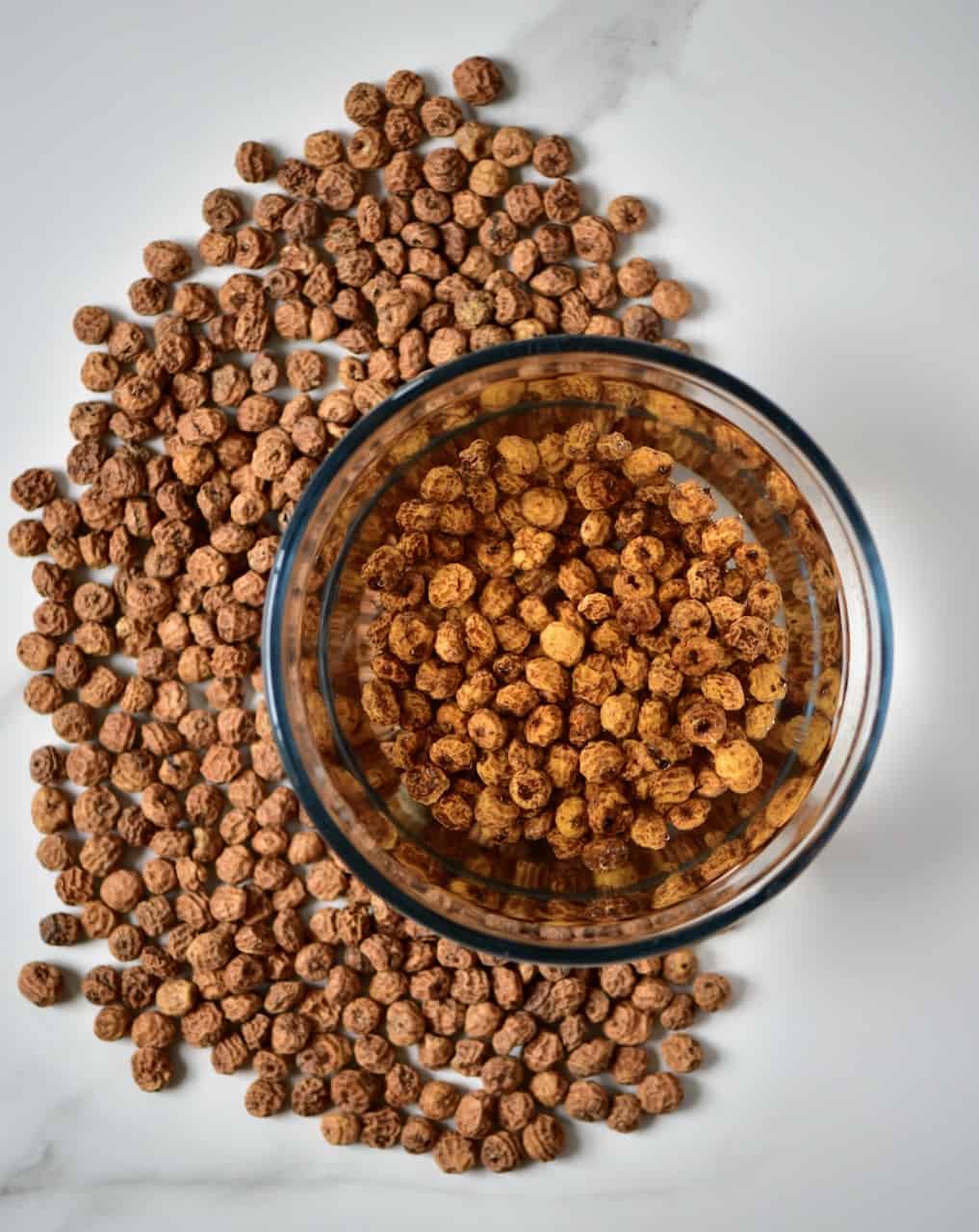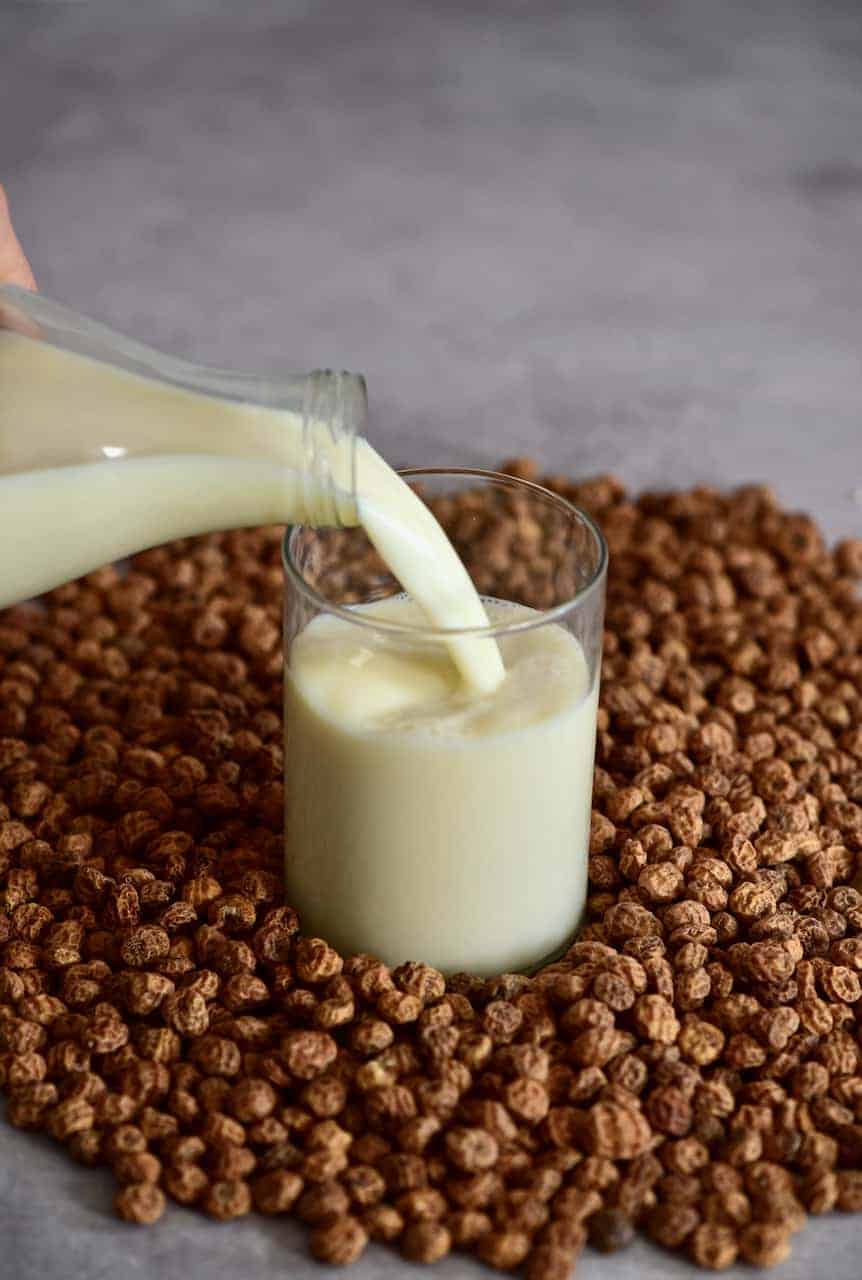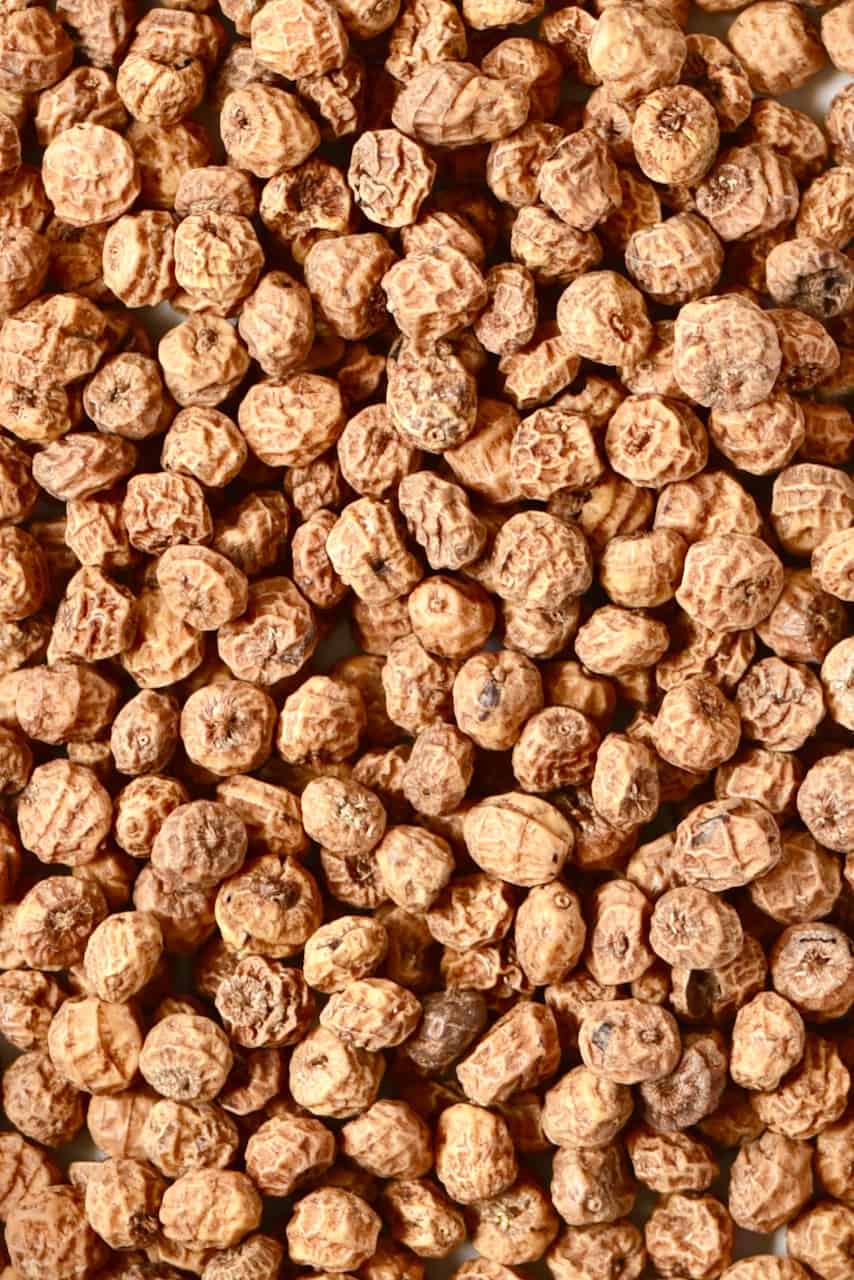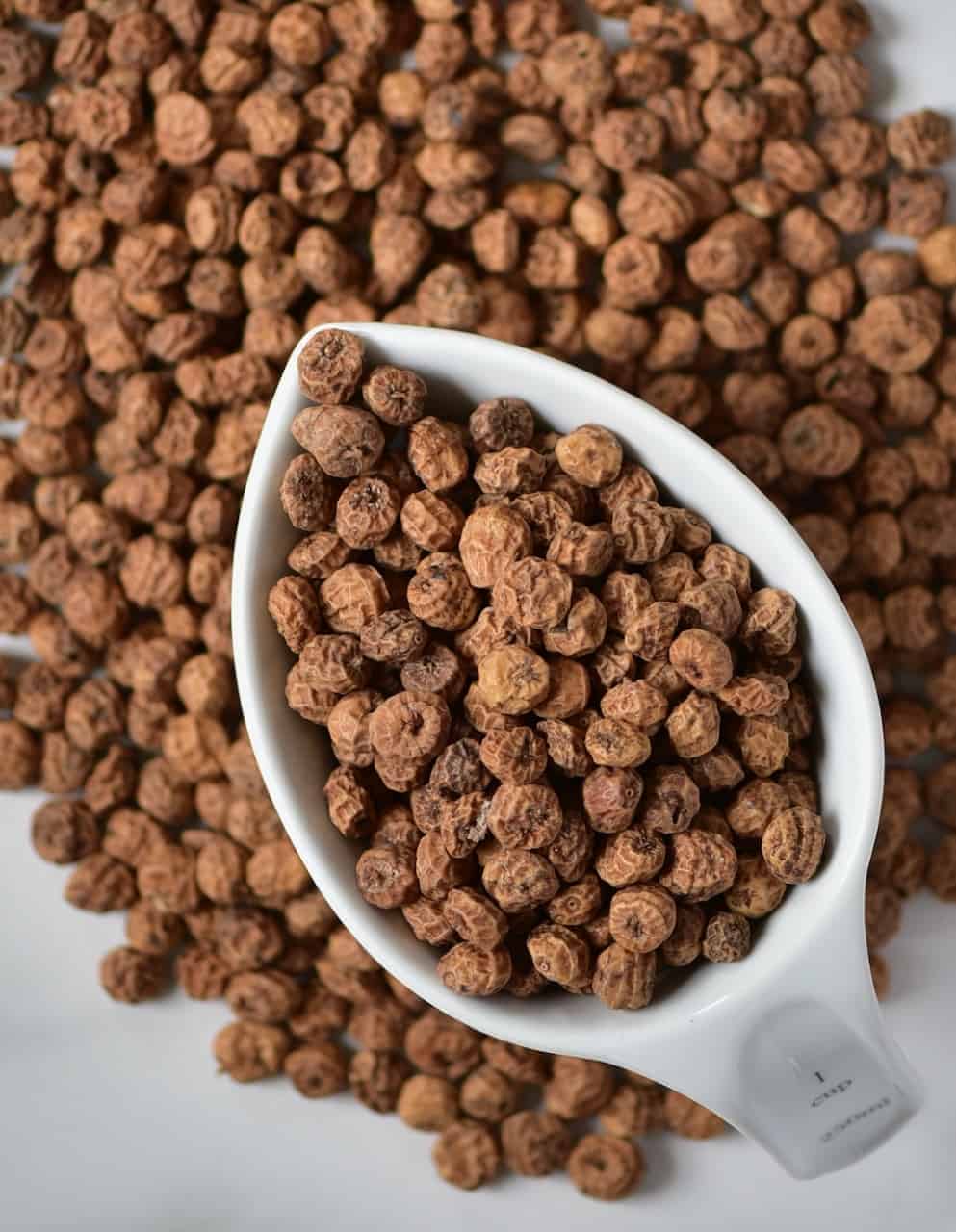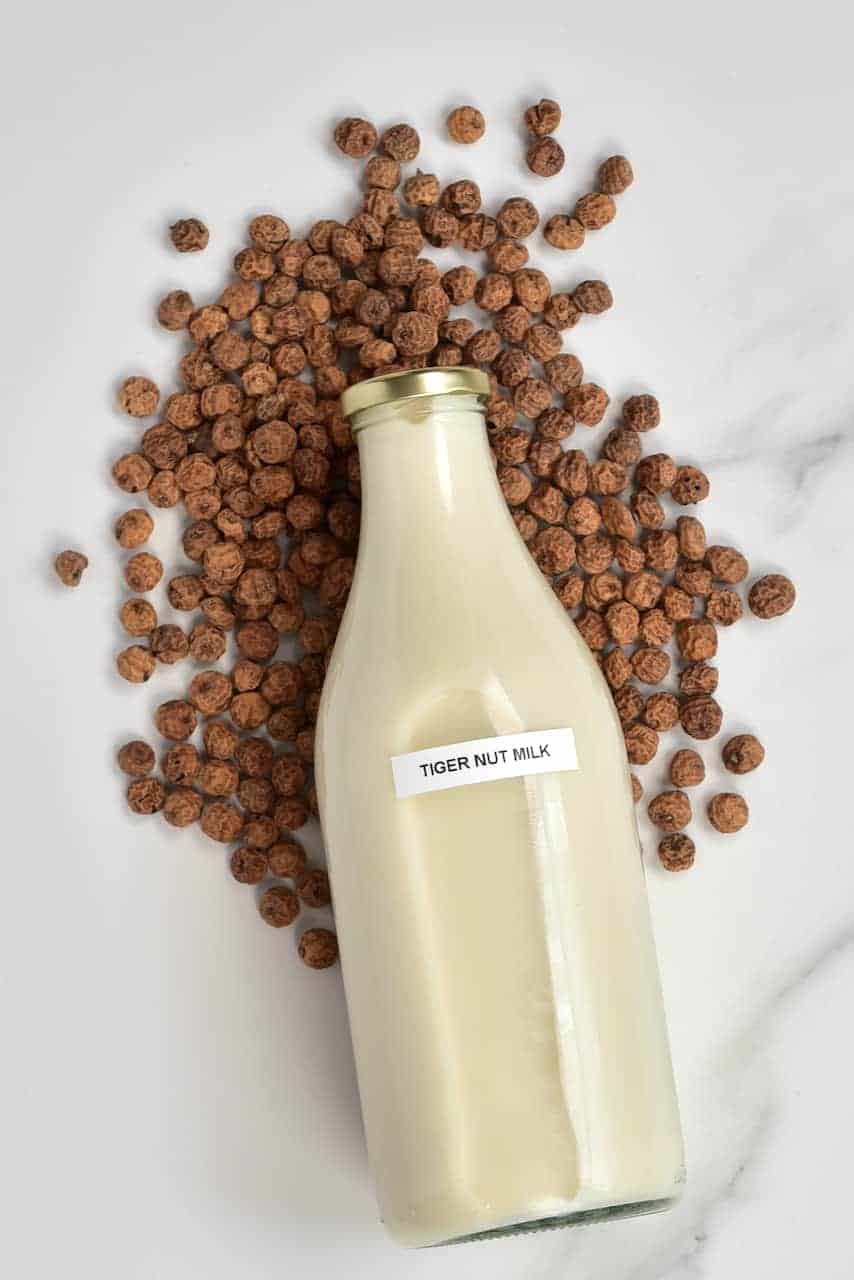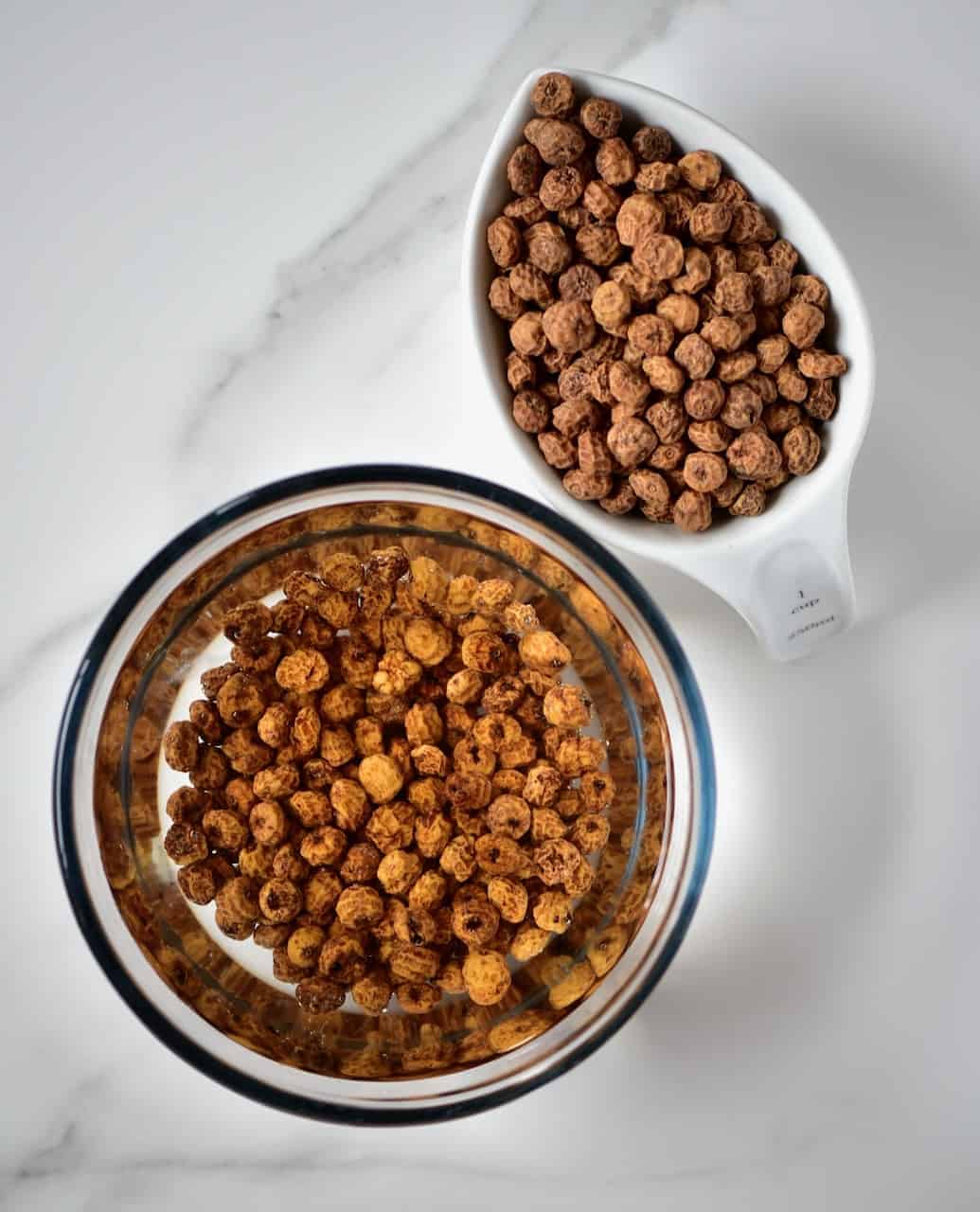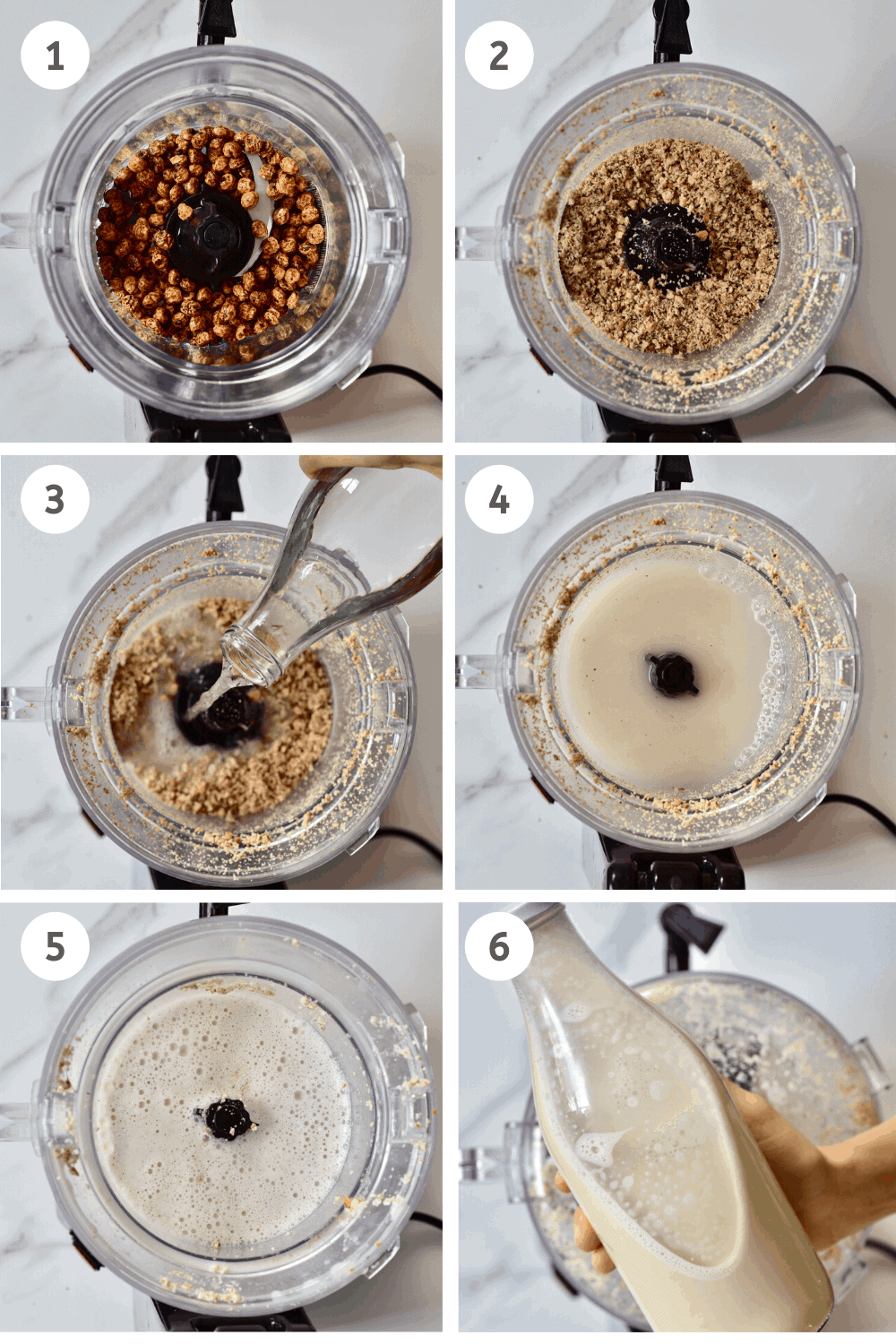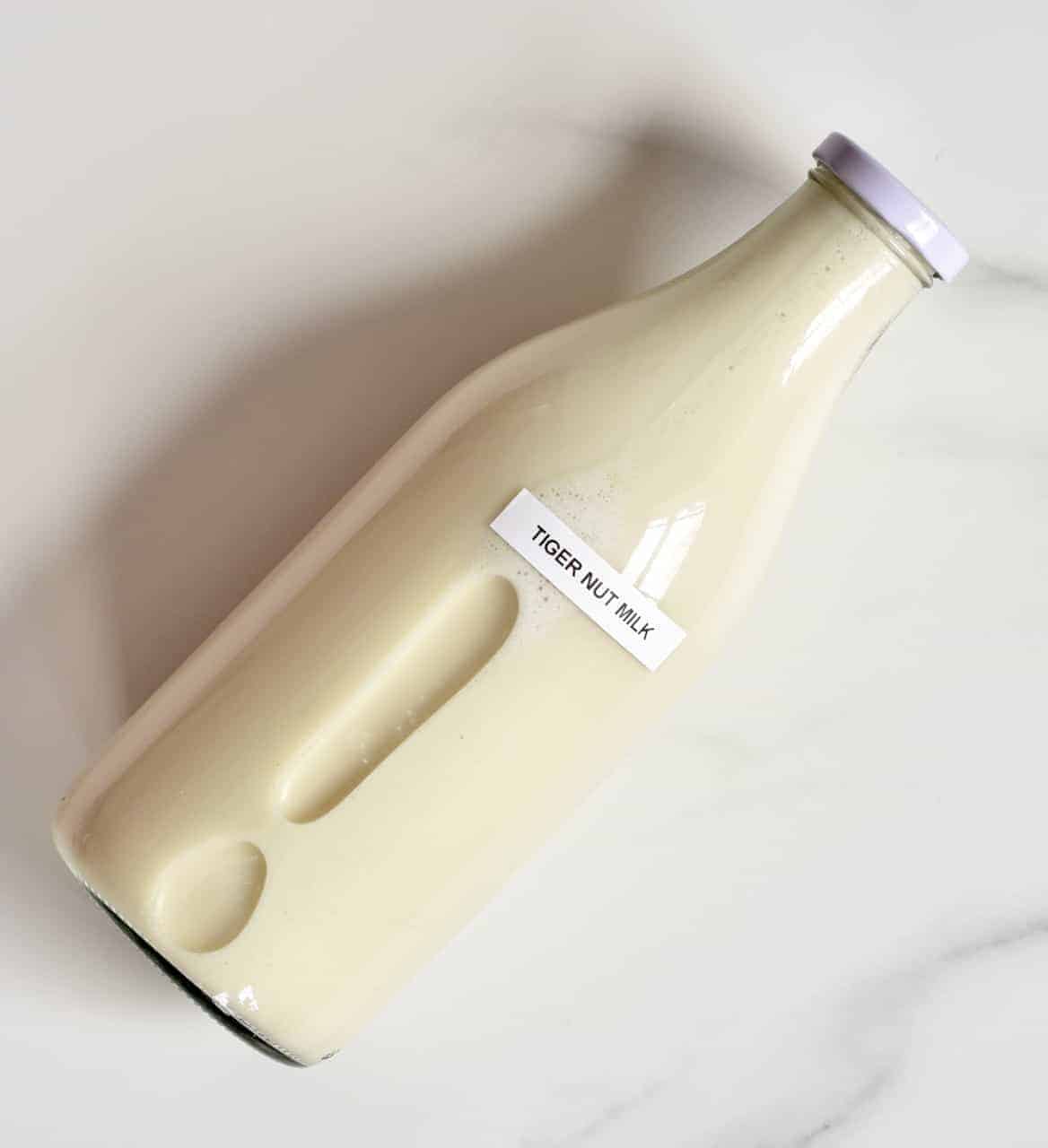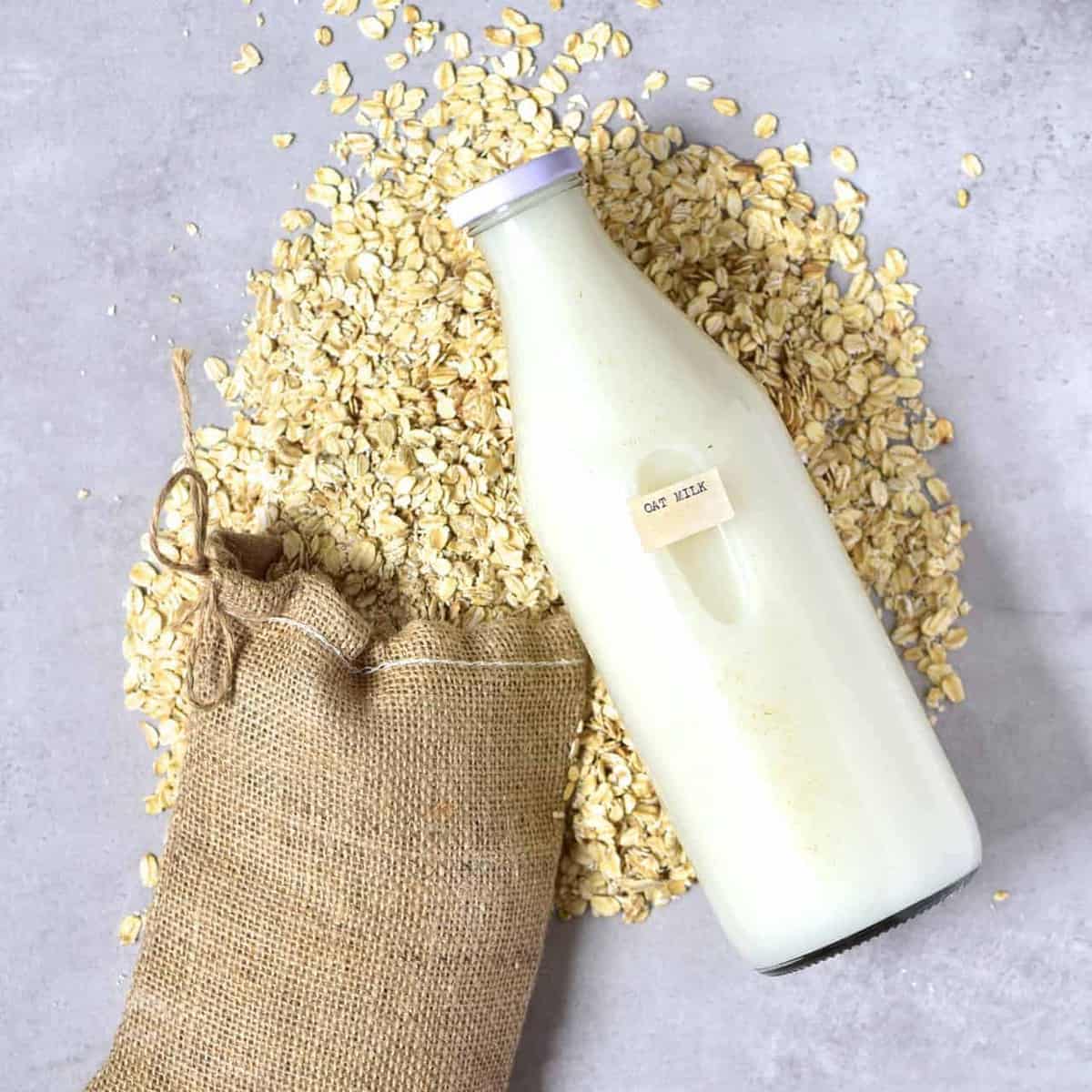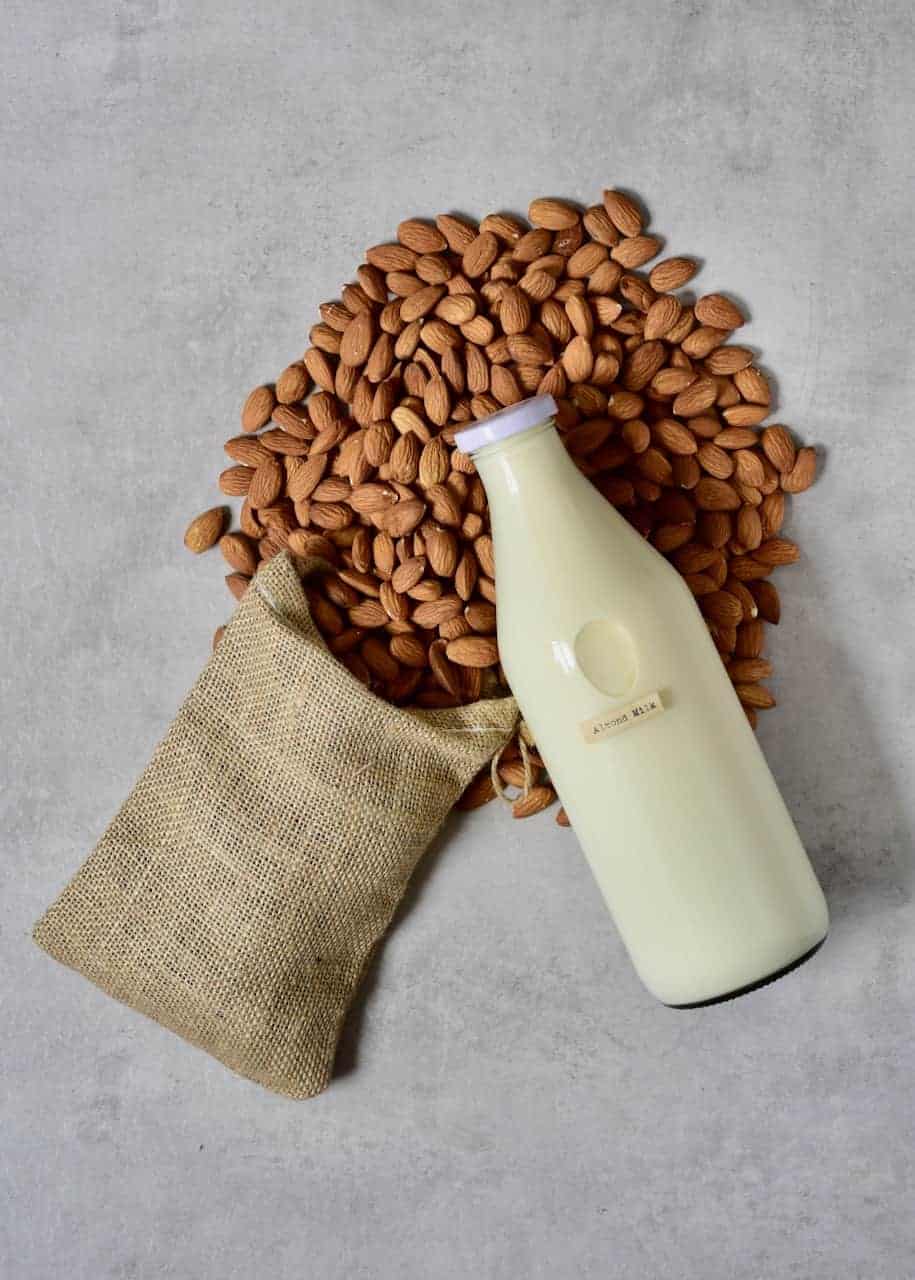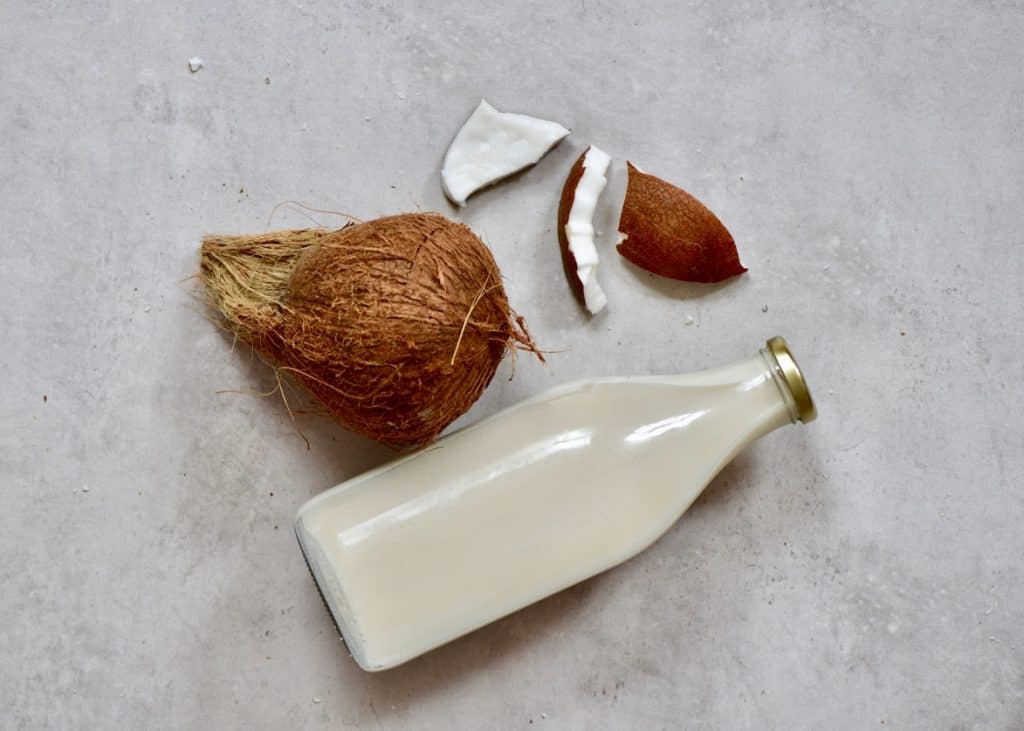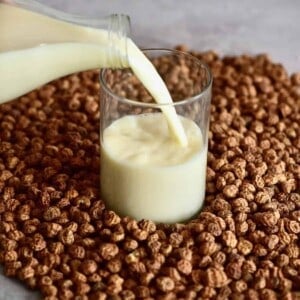You may have noticed that I’ve been on a bit of a dairy-free milk kick at the moment – with recipes for a wide variety of nut milks, oat milk, rice milk, soy milk, etc. So how could I not add this homemade tiger nut milk recipe to my collection? Now, you may be wondering what are tiger nuts and what are the benefits of tiger nut milk in comparison to your usual dairy-free milks. Have no fear; the answers are all below in the blog post. As well as how to eat tiger nuts pulp leftover from the milk-making process. While tiger nut milk isn’t as widely acknowledged as certain other dairy-free milk options here in the UK, it is a beloved drink in Spain. This drink is called horchata de chufa and is served ice-cold in the hot summer months. It is also consumed in Mexico with cinnamon and vanilla. However, it is also a great everyday dairy-free milk option all year round and definitely worth trying.
What are tiger nuts?
First things first, tiger nuts aren’t actually nuts. Nor do they have anything to do with tigers. Tiger nuts (aka cyperus esculentus) are a part of the ‘tuber’ family, like potatoes and artichoke – which means they’re an excellent alternative for those with nut allergies and grain allergies.
Tiger nuts are a fantastic food for a majority of diet choices; paleo, gluten-free, vegan, low FODMAP, grain-free, whole food, etc.They have a few names including tiger nut, chufa, earth almond, yellow nutsedge, etc. and were originally cultivated in Egypt as far back as 4000bc.In terms of taste, it can be a bit hard to describe. Some day they are similar to almonds with a rich, nutty flavor. However, they are also naturally sweeter – with others likening them more to coconut.
What is most spectacular about these little tubers are the amazing health benefits they pack. Which, is probably why tiger nuts are regaining popularity around the world.
Benefits of tiger nut milk
Tiger nuts are tiny tubers which are a good source of resistant starch with high fiber content. They have great health benefits. In fact, one source I read states that they are an ancient superfood with unique macronutrient content suggesting they are a ‘perfectly balanced’ nutritional food. While there is definitely a long list of health benefits surrounding tiger nuts and tiger nut milk, personally there is one that stands out for me. Tiger nuts are an amazing prebiotic food with resistant starch high fiber content. What does this mean? To put it simply, we already know that fiber is essential to our diet for bowel and digestive health. However, more recently, there are an increasing amount of studies being published linking high fiber diets to overall improved health. This includes keeping control of blood sugar levels and lowering cholesterol, as well as weight loss and management. Basically, from what I’ve read, eating a high-fiber diet = living a longer life. Obviously, it’s not as simple as that when you factor in everything else in our lives – but it’s certainly an exciting find. And, tiger nuts contain more fiber than even oat bran. So what about resistant starch? – This acts as a prebiotic, aiding good bacteria to thrive in our gut. The link between good gut health and overall health seems to be increasing weekly and adding lots of prebiotic foods into your diet is a goal worth having. Note* Other prebiotic foods include bananas, onions, garlic, asparagus, and leeks. To name a few. With the above being said, it’s worth noting that when suddenly increasing your prebiotic intake, this can cause temporary digestive issues. Your gut does take some time to get used to a change in its microbiome – so I suggest slowly increasing your prebiotic intake.
What about tiger nut nutritional value?
Tiger nuts are a rich source of a variety of vitamins, minerals, and other good plant compounds. This includes containing high levels of Vitamin E ( 278% of your DV, in fact, in a 1oz serving) and Iron. They also contain good amounts of Vitamin C, phosphorus, magnesium, zinc, and potassium. All of the above work together to improve the health of our immune system as well as overall bodily health. They are also very rich in antioxidants, protecting our bodies against harmful free radicals and a variety of diseases thought to be caused by chronic inflammation, including heart disease and even certain cancers. Although, it’s worth noting that they do also contain ‘antinutrients’ which reduce certain nutrient absorption in the gut. This is the case with many legumes, seeds, and nuts. Germinating the tiger nuts can reduce the antinutrient levels, but isn’t necessary for this DIY tiger nut milk. Tiger nuts are also said to be anti-bacterial and have been tested (and approved) against bacteria including E-Coli and Salmonella.
How to make tiger nut milk in six easy steps
Tiger nut milk is a great alternative to cows milk and creates naturally sweet, nutty plant-based milk. Here is the recipe to make tiger nut milk in just a few simple steps.
Ingredients
All you need is:
tiger nutsfiltered water
Steps
Start by soaking the tiger nuts for six hours or overnight. They will swell in size ever so slightly and will make them easier to blend into creamy, smooth milk. Add the soaked tiger nuts into a high-speed processor/blender. Blend the nuts down to rough pieces. Add the 4 cups of water and blend again till creamy and smooth. This usually takes between 2-3 minutes. I use my NutraMilk processor, which allows me to drain the liquid directly into a bottle while keeping the tiger nut pulp leftovers in the jug. When using a regular blender/food processor, after blending the nuts with the water, pour the liquid into a bowl through a nut milk bag. Squeeze the nut milk bag to get all the milky liquid out. Then pour into a bottle. You could also use a fine-mesh sieve and press out the leftover tiger nut pulp to drain any liquid. The leftover tiger nut pulp can easily be made into flour by leaving it to dry (or dehydrating it at a very low temperature in the oven). This can then be used in a variety of bakes and works similarly to almond flour, although is slightly sweeter. The tiger nut flour can then be used for crackers, no-bake bars, pancakes cookies, etc. Alternatively, you could leave it wet and blend it into smoothies Store in a glass bottle in the fridge for 3 days. You will notice it begins to smell slightly sour as it spoils. Note* before using it, give the bottle a good shake to mix up any loose sediment at the bottom of the bottle – Then, you’re good to go.
Other Simple DIY’S You May Like
If you’re interested in trying some more delicious dairy-free milk recipes, then look no further. I have a variety of different dairy-free milk recipes on my blog including this Homemade Oat Milk ( that isn’t slimy), Zero Waste Homemade Almond Milk, and How-to: DIY Homemade Coconut Milk. For the full list, feel free to browse through the DIY section of my blog or search ‘milk‘ in the search bar for options including rice, soy, cashew, walnut, etc.
